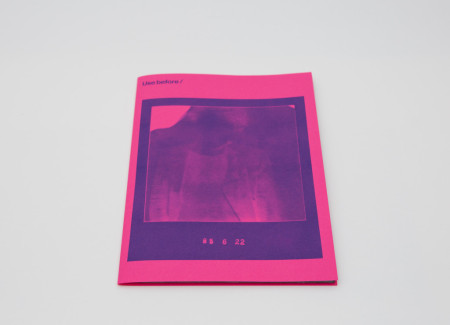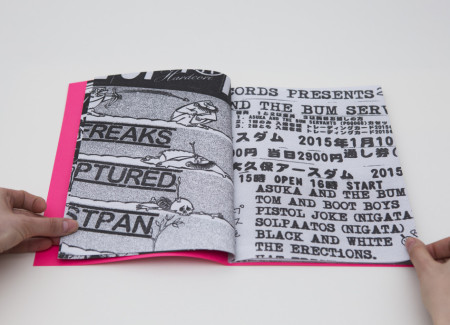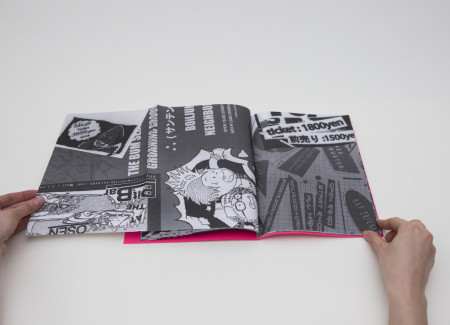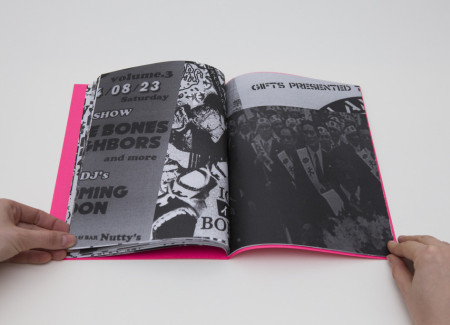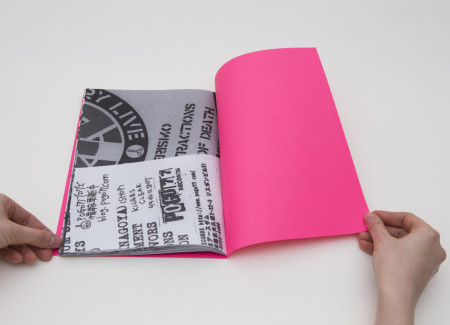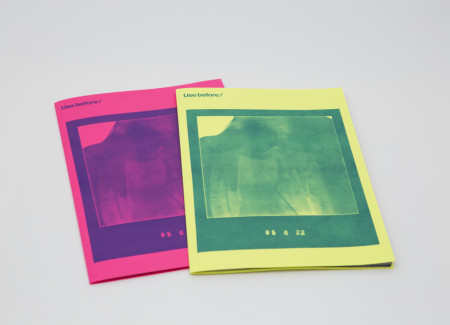JTF (just the facts): Published in 2015 by a0 (here). Soft cover, 32 pages, with black and white collages and 81 color photographs. All of the pages are gatefolds and there are no texts or essays. In an edition of 100 copies. (Spread shots below.)
Comments/Context: Yusuke Yamatani is yet another member of the current generation of young Japanese photographers who are actively experimenting with photographic tools and book making processes. After spending his earlier years playing music with different bands, he studied philosophy at Rissho University. He then moved to Nagasaki and began to focus on photography more fully, studying and taking workshops with the famous photographer Shomei Tomatsu. Yamatani spent much of his time with underground communities inside and outside of Japan (from a squat in Milano to punks in Thailand and Indonesia), and these experiences are reflected in his photographs – the energetic youth culture of punk and skateboarding is a common theme in his work.
Yamatani has recently started to use the zine as the primary platform to share his work. His most recent zine Use before was published as part of the new series titled “a0.” This photobook zine project aims to highlight the work of emerging Japanese photographers and Yamatani’s zine is the first in the series. Starting with Daido Moriyama’s legendary Another Country in New York self-published in 1974 (the images were individually assembled into books on a copy machine during his printing show exhibition), the zine has been an essential format for artistic expression in Japan. These cheap Xerox-made publications have explored and pushed forward the idea of the photograph as a “copy”, reusing imagery in an innovative and affordable way. Even today, the zine format remains a vital form of experimentation for many young photographers. It is in the zine format that risks can be taken not only with the photography itself, but also with the choice of paper, binding, and printing.
In his latest zine,Yamatani combines his practice as a musician (he is a drummer) in the punk band called Neighbors and his life as a photographer in a creative way. Available in hot pink and fluorescent yellow cover variations (the image on the cover is a self portrait), the stapled zine is filled with abstract black and white images bursting with graphic vitality. Each spread is a unique, overlapped collage of English and Japanese text mashed up with images, comic characters, drawings, and computer screenshots, and various fragments taken from the flyers used to promote his band’s performances.
Hidden inside the gatefolds of the zine, Yamatani has placed a collection of portraits taken on one night in March of 2015, after Neighbors’ live music performance. Using expired Polaroid film, he took images of various audience members, each one captured in washed out, distorted color. Under each portrait, he has recorded the birthday of his sitter (while most of the audience was born in the mid 80s and early 90s, it was a diverse crowd, including some people born in the 60s). In some of the images, it is hard to discern any particular details, yet seen together, they reflect the gritty atmosphere of the concert. Yamatani’s zine also plays with the layout of the portraits in the gatefolds – there is no immediately obvious rule for how many images appear on each spread or in what order, and portraits of some people appear several times. The overall effect is loose and unconventional, like pictures found in a drawer or strewn across a table.
Bringing together the bright color cover, the dense flyer collages, and the faded portraits of the audience members, Use before shows us both the people who create the punk music subculture as well as the faces of its consumers. In this case, the zine is the perfect format for the work – it captures the buzzing energy of one particular night and translates that mood into an ephemeral photobook object that was printed, stapled and put together in a short period of time. With upcoming zines in the series featuring work by Mayumi Hosokura and Daisuke Yokota, it seems that zine’s informal, hand-to-hand nature is being reinvented once again.
Collector’s POV: Yusuke Yamatani is represented by Alison Bradley Projects (here) in New York and Yuka Tsuruno Gallery (here) in Tokyo. His work has not yet found its way to the secondary markets, so gallery retail remains the best option for those collectors interested in following up.
